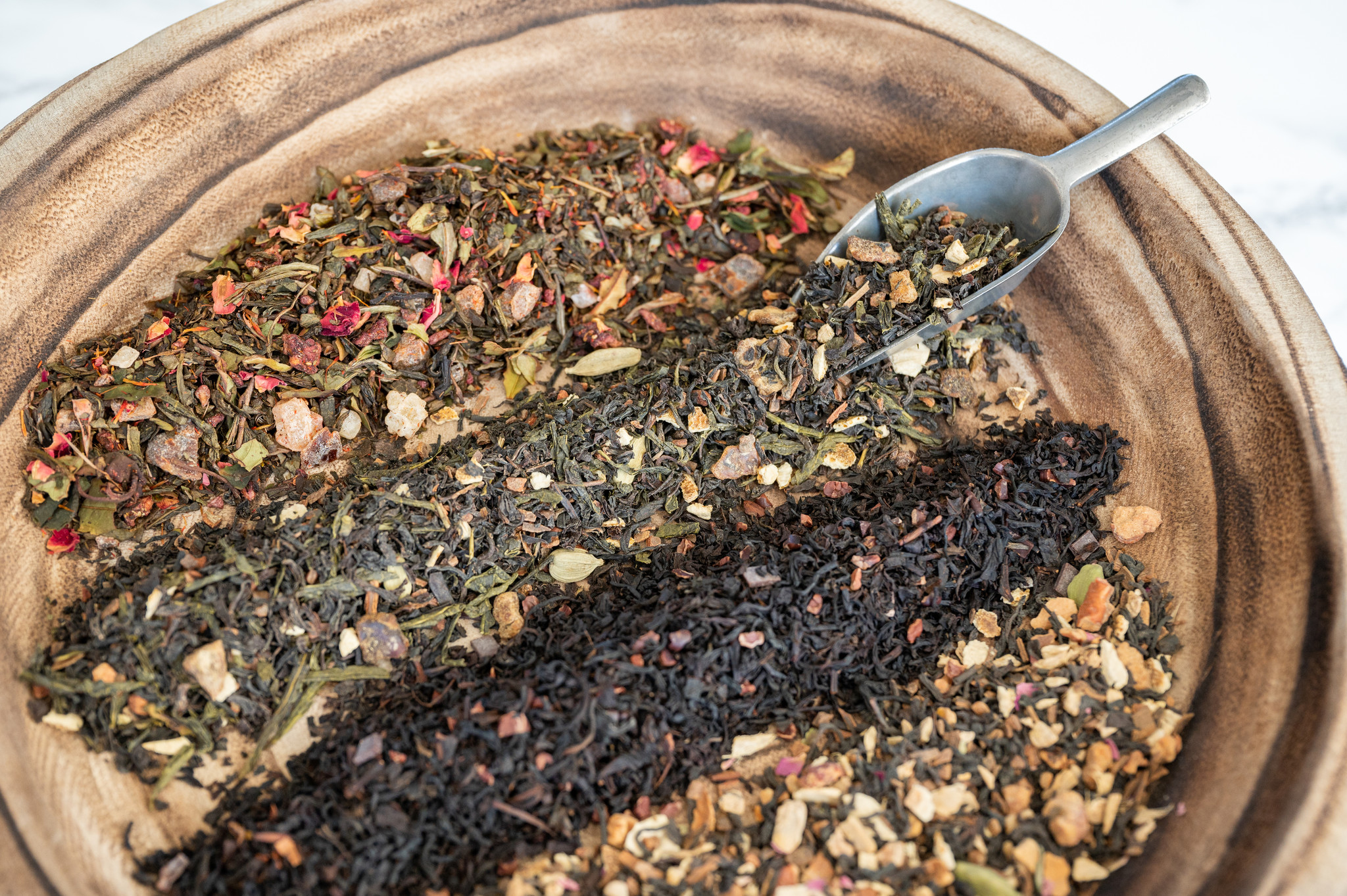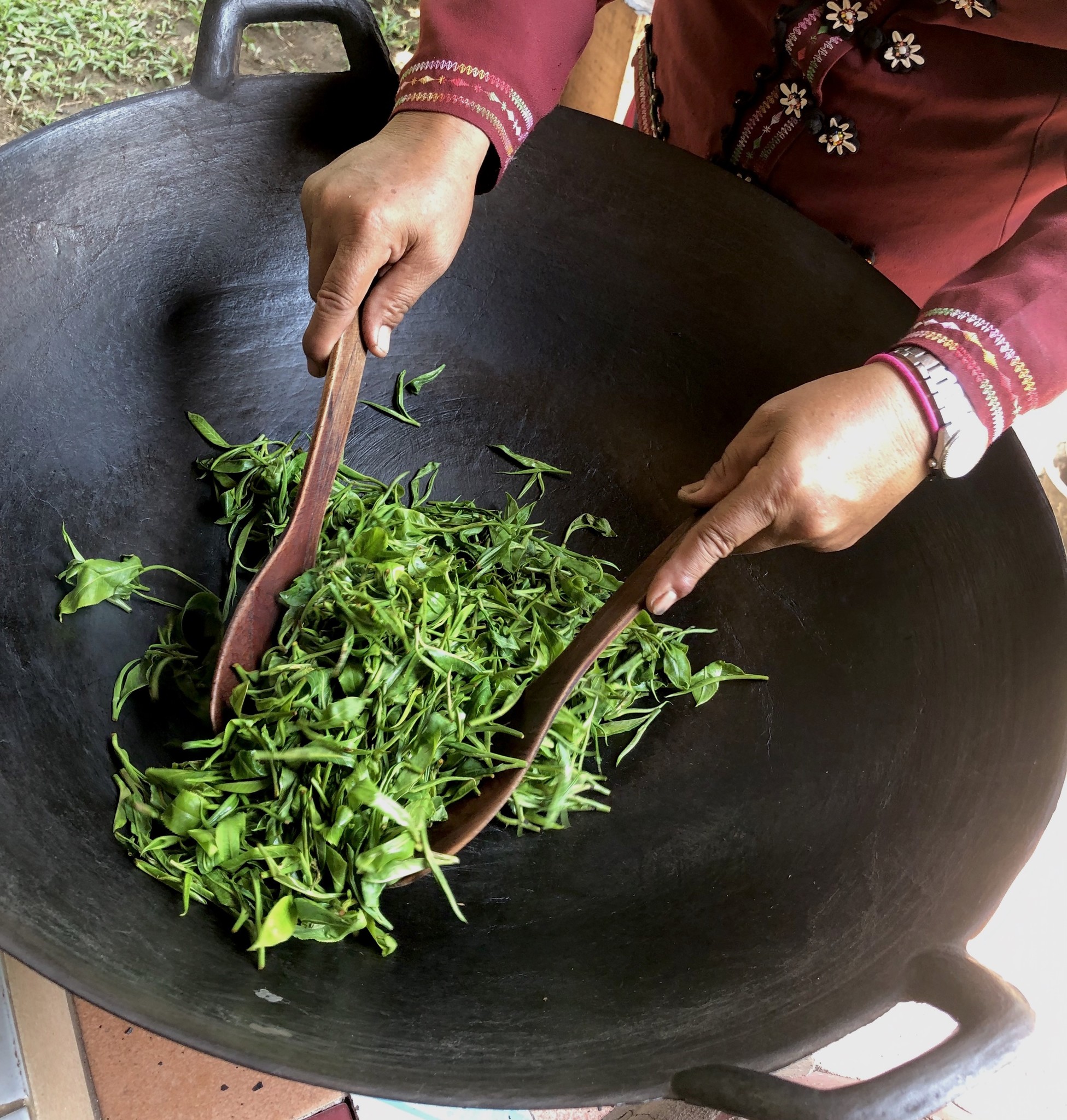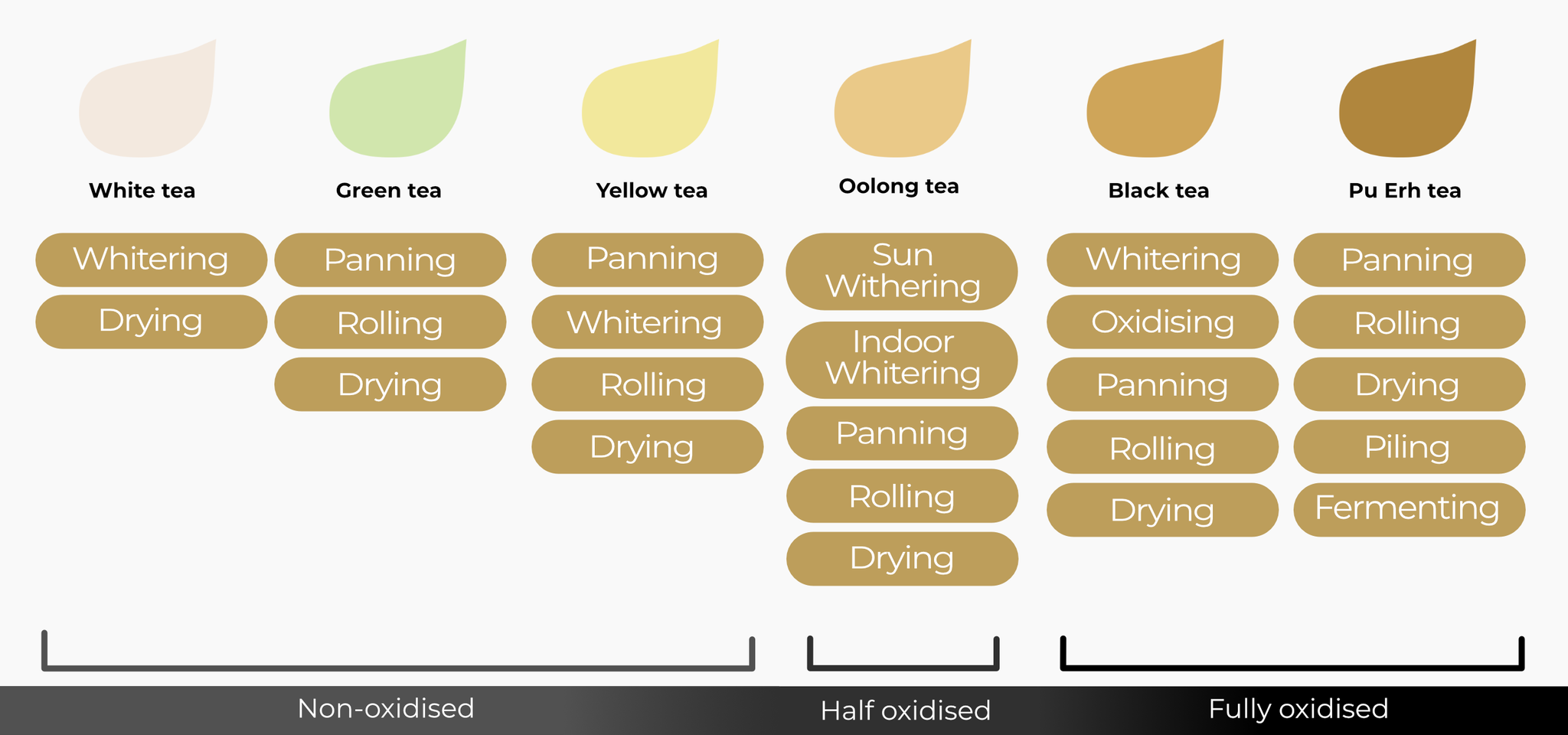The Allure of Tastea: Unveiling the Origins of Our Exquisite Blends

Embark on a captivating journey as we unveil the origins of our remarkable teas, sourced mainly from three enchanting lands: China, Sri Lanka, and India. Each region boasts its unique terroir and rich heritage of tea cultivation, making every sip an exploration of flavors.
Distinctive Tea Variants: Sinensis & Assamica variants
All teas, whether green, black, white, or yellow, come from the same plant, the Camellia Sinensis. However, the plant has two important variants. At the heart of our tastea blends lies the Sinensis variant, with its delicate, light leaves, perfect for crafting green and white teas like our Calm Down, Sweet Dreams, Picture Perfect, Say Cheese... Cake, refreshing Mojito, and authentic Matcha. The Camellia Sinensis variant thrives in China and Japan, where the terroir adds subtle nuances to the tea's character, ensuring a taste that transports you to the tea gardens of Zhejiang and the picturesque landscapes of Jiangnan.

On the other hand, we find the robust Camellia Assamica variant, with its coarser and rougher leaves, predominantly grown in India, Africa, and Sri Lanka. This variety graces our blends like Hocus Pocus Focus, Frozy Cozy, Chai Dubai, and indulgent Naughty Caramel, resulting in delightful black and Pu Erh teas. The leaves of the Assamica, cultivated with love and care in the lush South Indian slopes of the Nilgiri Hills and the breathtaking landscapes of Sri Lanka's Sabaragamuwa region, add a touch of warmth and authenticity to every cup.
Together, the Camellia Sinensis and Camellia Assamica varieties form the heart and soul of our tastea blends, bringing you a harmonious fusion of flavors that celebrate the unique heritage and cultural richness of China, Japan, India, and Sri Lanka. With every sip, you embark on a journey through these extraordinary regions, where nature and the mastery of tea craftsmanship come together to create an unforgettable taste experience.
Have a look at the product descriptions in the shop to discover the origin country of each flavour. Do you have any other question? Feel free to send us an email via [email protected]!

The process
Once the leaves are picked, an extensive process takes place that ultimately makes it a delicious tea.
Depending on the process and the tea plant, the same tea leaf can become multiple types of tea. This has everything to do with the processing of the leaves. There are many types of tea: Green, Black, White, Yellow, Oolong and Pu Erh tea. Did you know that Rooibos and Herbal teas are not teas at all? The tea does not come from the Assamica or Sinensis tea plants!
The processing of the tea leaves has several stages. These phases consist of oxidizing, de-oxidizing, rolling and forming the leaves. One tea goes through all phases and the other does not. That ultimately determines what kind of tea it will be! Check out the infographic to see the whole process at a glance. Here we have divided the teas on a horizontal line by means of oxidation. For example, one of the biggest differences between black and green tea is the oxidation process. Black tea is oxidized and green, yellow and white tea is not. Due to the oxidation process, it becomes black tea.
During oxidization, the juices of the product come into contact with oxygen in the air, which causes the product to oxidize. A good example of this is an apple. As soon as you take a bite out of the apple and then leave it, the inside becomes dry and discolored. The juices come into contact with the air! To stop the oxidation process, you can heat the product, which can be done in different ways.
You can steam the leaves, which happens a lot in Japan, for example. Steaming gives the tea an almost creamy and filmy taste. You can also fire (or pan) the leaves. In this method, the tea is heated in/on a cast iron (or similar) plate.
When the product is oxidized (or not), the leaves are formed for some teas. This is caused by the rolling of the leaf. As a result, the tea leaves are rolled into a beautiful shape and then dried so that it ultimately ends beautifully in your tea tin!
This was the journey of your tea tin. Overwhelming, huh? Is it not yet completely clear or do you have a question? Feel free to send us an email via [email protected]!


